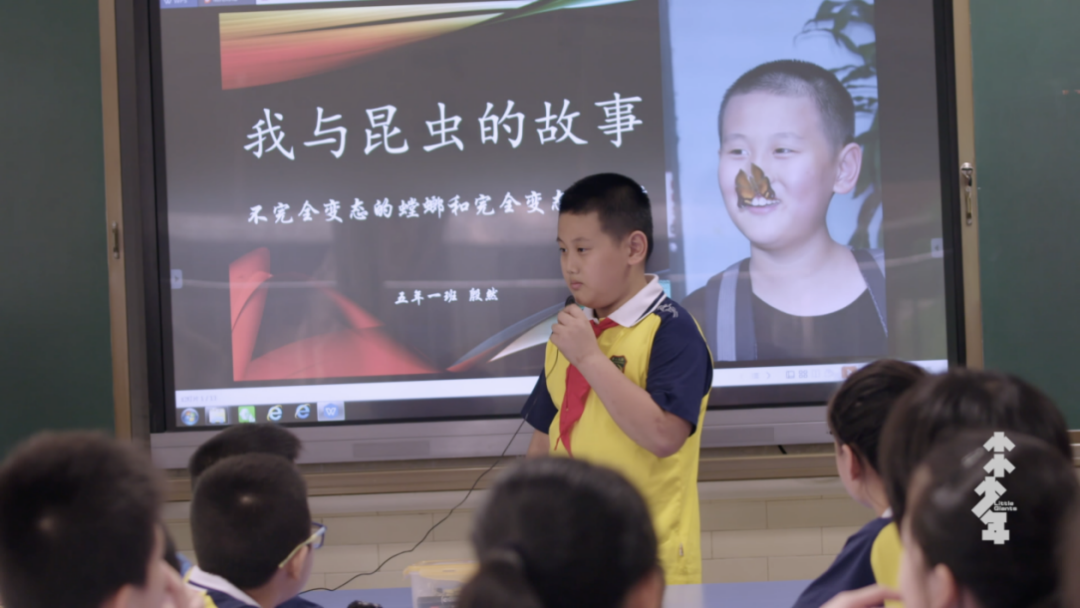On January 20th, the National Disaster Prevention, Mitigation and Relief Committee Office and the Emergency Management Department released the basic situation of China’s national natural disasters in 2023 and the top ten natural disasters in 2023 after consultation and evaluation by the relevant member units.
In 2023, floods, typhoons, earthquakes and geological disasters are the main natural disasters in China.
In 2023, floods, typhoons, earthquakes and geological disasters are the main natural disasters in China, and droughts, wind and hail, low-temperature freezing and snow disasters, sandstorms and forest and grassland fires also occur to varying degrees. In the whole year, various natural disasters caused 95.444 million people to be affected to varying degrees, 691 people died and disappeared due to disasters, and 3.344 million people were resettled urgently; 209,000 houses collapsed, with 623,000 seriously damaged and 1.441 million generally damaged; The affected area of crops is 10539.3 thousand hectares; The direct economic loss was 345.45 billion yuan. Compared with the average value in the past five years, the number of people affected, the number of people missing due to disasters and the area affected by crops decreased by 24.4%, 2.8% and 37.2% respectively, while the number of houses collapsed and direct economic losses increased by 96.9% and 12.6% respectively.
The main features of national natural disasters in 2023 are:
one
The distribution of natural disasters in China is uneven in time and space, and the pattern of "emphasizing the north and neglecting the south" is obvious.
From January to March, except for the drought in southwest China in winter and spring and the major avalanche disaster in Linzhi, Xizang, the disaster situation in the whole country was relatively stable. In early summer, continuous rainy weather occurred in Henan and other places, which adversely affected the summer harvest. In the main flood season, super typhoon "Du Surui", catastrophic flood in Haihe River basin and severe rainstorm and flood in Songliao River basin occurred one after another. In mid-December, low-temperature rain, snow and freezing disasters occurred in Shanxi and other places, which had a great impact on people’s production and life. On December 18, the Jishishan earthquake in Gansu Province with a magnitude of 6.2 caused heavy casualties in Gansu and Qinghai provinces. The number of houses collapsed in the north and south accounted for 92.2% and 7.8% of the total losses in China, respectively, and the direct economic losses accounted for 73.7% and 26.3% respectively.
2
North China and Northeast China suffered from severe storms and floods, and local geological disasters of mountain torrents suddenly occurred.
In 2023, the national average precipitation was 612.9 mm, 3.9% less than normal, and there were 35 regional rainstorms. From the end of May to the beginning of June, there was a large-scale continuous rainy weather in Henan, which overlapped with the mature harvest period of wheat, causing a large range of crops to be affected. During the "Seven Downs and Eight Ups" period, under the influence of the residual cloud system of Typhoon Du Surui, extreme rainstorms occurred in North China and Northeast China, and basin-wide floods occurred in Haihe River, causing heavy casualties and property losses in Beijing, Tianjin and Hebei, and serious flood disasters occurred in Songhua River basin, causing serious disasters in Heilongjiang and Jilin. The geological disasters of mountain torrents in the southwest and northwest are scattered at many points, with heavy casualties in Sichuan, Chongqing and Shaanxi. In the whole year, the flood disaster caused 52.789 million people to be affected to varying degrees, 309 people died and disappeared, 130,000 houses collapsed, and the direct economic loss was 244.57 billion yuan. In addition, there are 3666 geological disasters such as landslides, collapses and mudslides in China, and the disaster level is mainly small, mainly in North China and Southwest China.
three
The number of typhoons and landings is small, and the landing intensity is strong, which brings many extreme rainfalls.
In 2023, there were 17 typhoons in the northwest Pacific and South China Sea, which were significantly less than normal, and 6 of them landed in China, which was slightly less than normal. Typhoon "Du Surui" brought heavy rain to Zhejiang and Fujian during its landing, causing local flash floods and waterlogging in some cities. After landing, the circulation was maintained on land for a long time, resulting in extremely heavy rainfall in North China, Huanghuai, Northeast China and other places, causing serious storms and floods; When Typhoon Sura landed, with the cooperation of cold air, it brought large-scale heavy rain to Guangdong and Guangxi. After the typhoon "Anemone" landed, the residual vortex affected South China for a long time, and the precipitation in Fujian and Guangdong exceeded the historical extreme. In 2023, typhoon disasters caused 11.316 million people to be affected to varying degrees, 12 people died and disappeared, more than 7,000 houses collapsed, and the direct economic loss was 47.49 billion yuan.
four
The moderate and strong earthquakes in mainland China are obviously weak, and the Jishishan earthquake in Gansu Province has caused great losses.
In 2023, there were 11 earthquakes of magnitude 5.0 or above in mainland China, which was significantly lower than the average annual level over the years, including 2 earthquakes of magnitude 6.0 or above, which was also lower than the average annual level over the years. The 5.5-magnitude earthquake in Shandong Plain caused damage to more than 2,900 houses and some infrastructure, resulting in a direct economic loss of 240 million yuan. The Jishishan 6.2 earthquake in Gansu province caused 151 deaths, 983 injuries, 70,000 houses collapsed, 99,000 houses were seriously damaged, 252,000 houses were generally damaged, and the direct economic loss was 14.612 billion yuan.
five
Staged droughts have occurred in southwest, north and northwest, and the overall disaster situation is lighter than normal.
In 2023, there were successive droughts in winter and spring in southwest China, summer drought in northern China and summer drought in northwest China, and the disaster situation was generally light. At the beginning of the year, there was less precipitation in most parts of southwest China, especially in Yunnan, where the average precipitation from January to May was 50% less than normal. From May to June, there are many high-temperature processes in North China and Huanghuai, which are extremely significant, and the precipitation in the northeast and west is 20-30% less. From June to August, precipitation and river inflow in western Inner Mongolia, Ningxia, most of Gansu and southern Qinghai are less, and there are temporary difficulties in drinking water for people and livestock and agricultural irrigation in some areas. In 2023, the drought disaster caused 20.974 million people to be affected to varying degrees, the affected area of crops was 38.037 thousand hectares, and the direct economic loss was 20.55 billion yuan.
six
Wind and hail disasters are scattered at many points, and Jiangsu and other places are affected by strong convective weather.
In 2023, there were 33 strong convective weather processes in China, and the average value in the same period in the last five years was less, mainly in spring and summer. There are more than 1,100 counties (cities, districts) affected by wind and hail disasters in China, which are widely distributed in North China, Huanghuai, Northwest China and Southwest China. A total of 26 tornadoes were observed and recorded in the whole year, including 9 strong tornadoes, which was significantly higher than the average number for many years. Tornado disasters in Yancheng, Suqian, Nantong and other places in Jiangsu killed 14 people. In 2023, wind and hail disasters caused 6.053 million people to be affected to varying degrees, 57 people died, the affected area of crops was 11.745 thousand hectares, and the direct economic loss was 11.73 billion yuan. In addition, there were 17 sandstorms affecting China throughout the year.
seven
Northeast China and North China suffered from low-temperature freezing and snow disasters, and Linzhi, Xizang suffered a serious avalanche disaster
In 2023, the whole country was affected by 31 cold air processes, including 8 cold wave processes. On November 5-7 and 21-24, the intensity of cold air reached a cold wave, and heavy snowfall occurred in Inner Mongolia and Northeast China. From December 13th to 16th, the intensity of cold air reached a strong cold wave, and the daily minimum temperature of 18 stations in Hebei, Shanxi, Beijing and Tianjin fell below the historical extreme value since the station was established in December, and there was a large range of rain and snow in the central region, which caused disasters in Hebei, Shanxi, Shandong and Henan. In addition, on January 17th, an avalanche occurred on Paimo Highway in Linzhi, Xizang, killing 28 people, making it the deadliest avalanche disaster in China in recent years. In 2023, low-temperature freezing and snowstorm caused 3.225 million people to be affected in different degrees, 30 people died, the affected area of crops was 5.192 thousand hectares, and the direct economic loss was 4.92 billion yuan.
eight
Forest and grassland fires started at several historical lows, and the situation was generally stable.
In 2023, there were 328 forest fires in China, mainly in Inner Mongolia, Heilongjiang, Guangxi and Yunnan provinces (regions), and two people died as a result of the disaster. There were 15 grassland fires, mainly in Inner Mongolia, and one person died. The number of forest and grassland fires is at a historical low level, and the average number of forest and grassland fires has decreased by 77.5% and 46.8% respectively in recent five years.
Top Ten Natural Disasters in China in 2023
After consultation and evaluation by the relevant member units of the National Committee for Disaster Prevention, Mitigation and Relief, the top ten natural disasters in China in 2023 are as follows (in order of disaster occurrence time):
one
On January 17th, Xizang Linzhi Paimo Highway avalanche.
At about 19: 50 on January 17th, an avalanche occurred at the exit of Duoxiongla Tunnel on the highway from Paizhen, Milin County, Linzhi City, Xizang (in the direction of Medog), and some vehicles and personnel were buried, resulting in 28 deaths.
2
Rainstorms, floods and geological disasters in Chongqing at the end of June and the beginning of July
From the end of June to the beginning of July, some areas in Chongqing were hit by heavy rainfall, which caused floods and geological disasters, causing 358,000 people in 27 counties (districts) such as Wanzhou, Wushan, Wuxi, Shizhu and Qijiang to be affected to varying degrees, 25 people died and disappeared due to the disaster, and 18,000 people were urgently transferred and resettled; More than 600 houses collapsed, more than 700 houses were seriously damaged, and more than 1,800 houses were generally damaged; The affected area of crops is 22.8 thousand hectares; The direct economic loss was 1.31 billion yuan.
three
No.5 typhoon "Du Surui" in 2023
The No.5 typhoon "Du Surui" in 2023 landed on the coast of Jinjiang, Fujian at around 9: 55 on July 28th, which was the strongest typhoon landing in Chinese mainland in 2023 and the second strongest typhoon landing in Fujian since 1949. There are 8-10 gusts in parts of eastern Fujian and eastern Zhejiang, and the local level is 11-16; The daily precipitation of five national meteorological observation stations in Quanzhou, Putian and Fuzhou in Fujian has exceeded the historical extreme. The typhoon caused 2.95 million people in Fujian, Zhejiang, Anhui, Jiangxi and Guangdong provinces to be affected to varying degrees, and 263,000 people were urgently transferred and resettled; More than 3,500 houses collapsed, more than 4,500 houses were seriously damaged, and 17,000 houses were generally damaged; The affected area of crops is 42 thousand hectares; The direct economic loss was 14.95 billion yuan.
four
Rainstorms and floods in Beijing, Tianjin and Hebei at the end of July and the beginning of August.
At the end of July and the beginning of August, affected by the residual circulation of Typhoon Du Surui, Beijing-Tianjin-Hebei and other places suffered from extremely heavy rainfall, causing severe storms, floods, landslides, mudslides and other disasters, causing 5.512 million people in Beijing, Hebei and Tianjin to be affected to varying degrees, 107 people died and disappeared due to the disaster, and 1.434 million people were resettled; 104,000 houses collapsed, 459,000 houses were seriously damaged, and 775,000 houses were generally damaged; The affected area of crops is 416.1 thousand hectares; The direct economic loss was 165.79 billion yuan.
five
Rainstorm and flood disaster in Northeast China in early August
At the beginning of August, affected by the superposition of typhoon residual cloud system northward and westerly trough, heavy rainfall occurred in many places in Northeast China, causing floods. Caused 1.194 million people in Heilongjiang and Jilin to be affected to varying degrees, 47 people died and disappeared due to the disaster, and 404,000 people were urgently transferred and resettled; 18,000 houses collapsed, 26,000 houses were seriously damaged, and 74,000 houses were generally damaged; The affected area of crops is 544.1 thousand hectares; The direct economic loss was 21.52 billion yuan.
six
"8.11" Mountain torrents and mudslides in Chang ‘an District, Xi ‘an, Shaanxi Province
On August 11th, a sudden flash flood and debris flow disaster occurred in Jiwozi Formation, Wuziping Village, Luanzhen Street, Chang ‘an District, Xi ‘an City, Shaanxi Province, causing 27 deaths and missing.
seven
The "8.21" flash flood disaster in Jinyang, Sichuan.
In the early morning of August 21st, Jinyang County, Liangshan Prefecture, Sichuan Province, was affected by short-term heavy rainfall, and a sudden flash flood and debris flow disaster destroyed the resident of the steel bar processing plant of the JN1 bid section project department of Yanjiang Expressway, causing 52 deaths and missing.
eight
Typhoon No.11 "Anemone" in 2023
The 11th typhoon "Anemone" in 2023 landed on the coast of Dongshan County, Fujian Province and Raoping County, Guangdong Province at 5: 20 and 6: 45 on September 5. "Anemone" circulation and residual vortex have a long influence time. In Fujian, Guangdong, Guangxi, Jiangxi and other places, 17 stations have exceeded the historical extreme value in September, and 6 stations have exceeded the historical extreme value. Urban and rural waterlogging and geological disasters have occurred in many places in Fujian and Guangdong, and over 70 small and medium-sized rivers have been flooded, and over-protected floods have occurred in Mulan and Lanxi, Fujian. The typhoon disaster caused 3.12 million people in Fujian, Jiangxi and Guangdong provinces to be affected to varying degrees, 6 people died and 177,000 people were resettled. More than 2,600 houses collapsed, nearly 2,300 houses were seriously damaged, and more than 5,000 houses were generally damaged; The affected area of crops is 66.5 thousand hectares; The direct economic loss was 16.66 billion yuan.
nine
Wind and hail disasters in Yancheng, Jiangsu Province in mid-September
From September 19 to 20, strong convective weather occurred in Yancheng and Suqian, Jiangsu Province, and local tornadoes caused wind and hail disasters. The disaster caused 20,000 people to be affected to varying degrees, and 10 people died due to the disaster. More than 500 houses collapsed, more than 1,600 houses were seriously damaged and 12,000 houses were generally damaged; The affected area of crops is 1.2 thousand hectares; The direct economic loss was 480 million yuan.
10
Jishishan M6.2 Earthquake in Gansu Province
At 23: 59 on December 18th, an earthquake of magnitude 6.2 occurred in Jishishan County, Linxia, Gansu Province, with a focal depth of 10 kilometers, causing 772,000 people in Gansu and Qinghai provinces to be affected to varying degrees, with 151 people killed and 983 injured. 70,000 houses collapsed, 99,000 houses were seriously damaged, and 252,000 houses were generally damaged; The direct economic loss was 14.612 billion yuan.
(CCTV reporter Zhao Yuxi)




